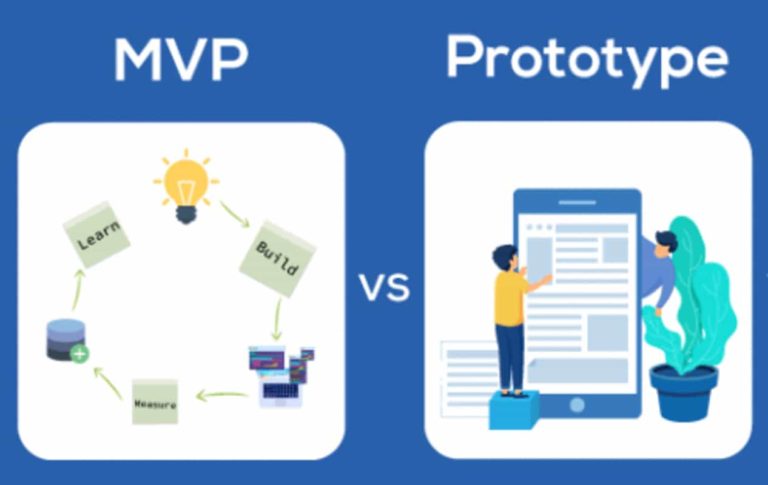How to Build a Unicorn: Practical Ways to Get It Done
Are unicorns mythical and only grow by chance or is there a method to the magic? Read on as we explore some practical approaches.

The explosion of unicorns, those privately held startups that have $1 billion or more in valuation continue to rock the startup and tech worlds.
One question, however, is, are they as rare as natural unicorns or can they be replicated in any way, by modeling maybe?
To accomplish this task, this post combs through available data and distills the entire information into a 7-step guide that anyone –including you– can employ to build a successful unicorn.
Defining A Unicorn
A unicorn in simplest terms is a privately held company with a $1 billion or higher valuation. Unicorns are scattered across the globe, with limited information available about their founders and entrepreneurial journeys.
Many of these available statistics, however, include biases that are irrelevant to the purpose of this study. So, the statistics below are void of ethnicity, location, and nationality biases, as these are the most irrelevant factors that determine a startup’s success as a unicorn.
The issue of time is also not essential, although most startups take 3 years to reach unicorn status.
Also read: 113 Most Relevant Startup Statistics
Some Telling Statistics
Combining research data from Prof. Ilya Strebulaev and Ali Tamaseb, the following are some statistics that provide deeper insight into the nature and inner workings of unicorns.
- Most unicorns have male founders.
- Most unicorn founders majored in computer science, engineering, & business.
- Academic degrees are helpful.
- 2-3 founders are the most common (60-70%) successful unicorns.
- Over 50% of unicorn founders are over 35 years old, while the peak age is 30-34 years old
- A unicorn founder’s age depends on the industry, SaaS founders are younger, while pharma industry founders are generally older.
- Industry experience is not necessary, except in biotech. Most founders never worked in their industry.
- The majority of unicorn founders are serial entrepreneurs.
- Over 70% of repeat founders had successful exits with their previous companies of over $50 million or $10+ million in annual sales.
- The most common degree for unicorn founders is a bachelor’s and MBA.
- Software, healthcare, and consumer products are the largest industries disrupted by unicorns.
- Most unicorns relied on business innovation rather than inventions, although technology helps.
- Unicorns thrive from low to medium and high-capital requirement industries.
- Most unicorns started out competing with multiple incumbents in their industries.
- Unicorns have highly differentiable products that set them apart.
- Most unicorns went after large markets, competing only for a share of them.
- Most unicorns offer solutions, with 30% offering life improvement solutions.
- The top markets for unicorns are productivity, saving money, convenience, entertainment, and health.
- 90% of unicorns are venture-capital funded.
- Ex-founders are some of the best angel investors.
- Unicorns raise funding early on and they keep raising more rounds.
Market Realities
With the above statistics in mind, a few basic concepts emerge that are critical to the success of any startup in reaching unicorn status. These concepts are:
- Disruption Is Key – Most unicorns are created by finding a better way to do things. This means that a market is already there and there are one or more companies engaged in the industry, but the startup has found a way to either provide a similar product at a lower price or a better product at the same price. Business disruptions are mostly the result of new technologies or methods of doing things that boosts efficiency and makes things cheaper. The incumbent companies are often stuck in traditional methods, which provides a market opportunity for fast-growing startups to disrupt.
- You Need A Large Market – Unicorns depend on a large number of customers to become the behemoths that they are. So, a startup aiming for unicorn status must first make sure that its chosen industry is large enough to create the cash flow necessary to become a large corporation. Without such a large market, then the founders are probably gambling.
- Product Differentiation Is Paramount – The products from successful unicorns easily stand out. This includes everything from visual expression to brand personality, product features, underlying technology, overall quality, and so on.
- Venture Capital Is Necessary – Unicorns differentiate themselves from other startups by their growth rate. They are the fastest-growing startups, often seeing 10%+ growth per week in a market where a bootstrapped startup, for instance, might be content with 10% per quarter. Marketing and other investments are necessary to achieve such rapid growth and the average founder does not have the often huge sums required for such campaigns. That’s why venture capital is almost always a part of a unicorn’s story.
- Partnerships Are Important – No man is an island unto himself and no one knows it all. It is beneficial to find similarly inclined partners early on in a startup’s journey, as this can help to reduce the inevitable challenges that lie ahead. Partnerships here are not just limited to co-founders. Mentors, relationships with other businesses, and even venture capitalists can improve the fortunes of the average founder and make the startup more likely to hit a billion dollars in valuation.
- Competition Is Good – Venturing into a market with already established market players is not a bad idea. It is a confirmation that such as market can get disrupted profitably, so long as the incumbents are sticking to their traditional and often inefficient methods of doing things. Be warned though that competition from other startups is not the same, especially when you are doing similar stuff as them. What your startup needs to succeed is either no competition at all or stiff competition from an old-fashioned company with old-fashioned ways of doing things, a dinosaur that you can run out of business.
Please note that while it is still possible to build a startup and scale it to unicorn status without the above market realities on the ground, it is much more difficult than when you have them. On the other hand, the more of these conditions that you find in the same market gives your startup a higher possibility of breaking the $1 billion valuation barrier.
How To Build A Unicorn In 7 Steps
Having observed the market realities that you need to have on the ground before setting off to build a unicorn, it is now time to look at the step-by-step guide to get it done:
Step 1. Think Big
Yup, a unicorn is a big business, so you can’t run one thinking like a small timer. There are many ways to think big, so here is a list for you:
- Constantly expand your mind through reading.
- Aim high in your ventures.
- Imagine the possibilities.
- Allow yourself to dream.
- See the big picture.
- Be specific in what you want to achieve.
- Mingle with successful people.
- Free yourself from limitations.
- Learn to delegate tasks.
- Learn to create partnerships.
- Create space and time to think, and learn to meditate.
- Identify the steps needed to achieve your goals.
- Start working from the first step.
Step 2. Get Some Business Experience
Reading business books is great, but there is no substitute for real-world experience. If you’ve been in business before, then good, especially if you succeeded. Else, you may want to partner up with someone with enough business experience to help your startup navigate the challenges ahead.
Step 3. Build A Good Team
The products you come up with and so many other stuff on this journey are up to you. But one area where you have no option is your core team, your ability to hire or partner with the right people.
You want inspired people who complement your shortfalls or bring what is needed to the venture, and this is critical. You cannot overlook this one in any way.
Step 4. Develop A Scalable Product
You need a large market to grow a unicorn, so your product has to be scalable. It also has to be well-defined, a unique offering that stands out from the rest.
However, you don’t need to get it right the first time, designing a minimal version of it with enough working features to make a potential client willingly pay is all you need.
Step 5. Iterate Fast & Release Often
This is where you get feedback from your important customers and use them to create, test, and release successful additional features, while discarding the failures. All unicorn products are works in progress.
Step 6. Market Aggressively
Growth is what sets unicorns apart from the rest. You want massive growth and the only way it happens is through marketing.
You want to get your offer in front of as many potential customers as possible, and this is where unicorns invest a large part of their funding.
Step 7. Get Funding Early & Often
Except you have other sources, you will need VC funding, and lots of it.
Table 1. Example Startup Valuation using the Berkus Method
| 1. | Has a sound business idea | $250k – $500K |
| 2. | Has a working prototype | $500k – $1M |
| 3. | Has a great team | $1M – $1.5M |
| 4. | Has strategic business relationships | $1.5M – $2M |
| 5. | Has sales / cashflow / revenue growth | $2M – $2.5M |
Table 2. Funding Rounds
| Funding Round | Pre/Seed | Series A | Series B | Series C |
| Stage Focus | Proof of concept | Revenue growth | Growth | Large expansions |
| Growth Elements | Hiring | Operations, marketing | Buying businesses | International markets |
| Investment Amount | $10K-$1M | $10M | $15M-$25M | ~$50M |
Conclusion
Coming to the end of our study of how to build a unicorn, you have seen what it takes and what is possible.
The entrepreneurship road is tough and building unicorns even tougher. So, make sure to give it your best, because many have made it and there is no reason you shouldn’t as well.
Books that can help you stay on the right path include The Personal MBA, The E-Myth Revisited, and The Magic of Thinking Big.





